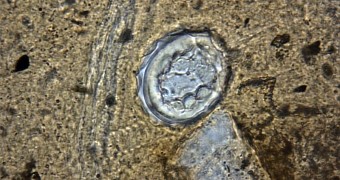If we're going to be honest here, we have to admit that it's news about the discovery of one fossilized dinosaur or another that usually make headlines. Still, this does not mean that massive creatures that roamed the Earth eons ago are the only thing on archaeologists' mind.
On the contrary, researchers are also very much preoccupied with finding long gone creepy crawlers. Creepy crawlers like, say, intestinal parasites that used to infect people many centuries ago. On the bright side, it looks like there are plenty of ancient parasites to go around.
Thus, a recent paper in the Journal of Archaeological Science announces the discovery of several intestinal parasite eggs at an archaeological site in Switzerland. The eggs were recovered from soil samples and researchers estimate them to be about 2,000 years old.
The eggs are surprisingly diverse
In the report announcing their find, the University of Basel archaeologists who discovered the ancient parasite eggs explain that they originate from three distinct species, identified as roundworms, whipworms and liver flukes.
They go on to detail that they were pulled from both human and animal excrements that were preserved over the millennia. Thus, the archaeological site where they were found used to be a Celtic settlement now known as Basel-Gasfabrik.
As shown by previous investigations, this settlement was inhabited sometime around 100 BC. It was populated not only by humans, but also by animals which folks used to keep close to their home either to feast on their meat or to have them help with agricultural practices.
What the eggs tell us about our ancestors
Having found these 2,000-year-old parasite eggs belonging to three different species at the site of the former Basel-Gasfabrik Celtic settlement, researchers cannot help but point out that, all things considered, chances are that our ancestors in the area did not enjoy the best possible sanitary conditions.
First off, the fact that the eggs come from roundworms, whipworms and liver flukes indicate that, of the people who lived in this corner of the world millennia ago, many probably carried several different parasites in their body at the same time.
What's more, seeing how the eggs were recovered from human and animal excrements that were mixed together, it's safe to assume that the settlement's residents and their animals lived side by side in rather poor conditions. Hence, it could be that, quite often, parasites passed from livestock to humans.
“This suggests poor sanitary conditions in the former Celtic community, in which humans and animals lived side by side,” the University of Basel archaeologists behind this research project explain in a statement. Furthermore, “At the same time, the distribution of the parasite eggs indicates possible routes of transmission within and between species.”

 14 DAY TRIAL //
14 DAY TRIAL //